
Optimising Hybrid Performance
A crop is considered to have reached a specific stage when 50 of the plants display the typical characteristics of that particular stage.
Mineral supply
Weeds
Pests
Water supply
- ‹
-
1st growth stage
Leaf differentiation and emergence
-
2nd growth stage
Ovule development and pollination
Leaf, root, and stalk growth -
3rd growth stage
Kernel set
Grain fill - ›
+/- 80 GDDs, depending on planting date, climate, and soil
Planting/Emergence
- The first leaf emerges on the soil surface. Seedlings are visible along the row.
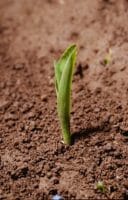
Weed control before planting/Weed control before emergence
2 - 3 leaves
- The first leaf has a rounded tip. The seedling lives off the seed reserves.
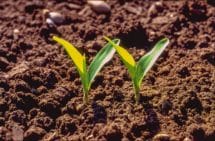
Nitrogen: treatments should be split. Adjust rates to the field potential. Split treatments allow nutrient supplies that are in step with the needs of the plant.
Trace minerals: apply Zn and Mn treatments during crop development, if necessary.
1. Apply broadcast weed control as a complementary measure, on annual grasses and annual dicots.
4-5 leaves | Seedling “weaning”
- The seedling feeds off the recently-emerged seminal roots and crown roots.
- Establishment of the final plant population.
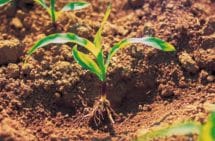
Nitrogen: Treatments should be split. Adjust rates to field potential. Split treatments allow nutrient supplies that are in step with the needs of the plant.
Trace minerals: Treatments during crop development, if necessary.
1. Apply broadcast weed control as a complementary measure, on annual grasses and annual dicots.
2. Postemergence weed control
3. First treatment against perennial weeds
Follow local alerts on slugs, earworm caterpillars, aphids, etc.
An average 44 GDDs are needed for each new leaf.
8-10 leaves | Tassel and ear shoot initiation
- At 50-percent visible leaves (8 leaves in early hybrids and 10 leaves in late hybrids), all leaves are differentiated and the tassel and future ear are initiated. The plant enters its rapid growth phase.
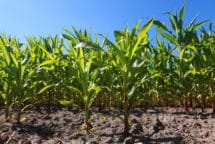
Nitrogen: Treatments should be split. Adjust rates to field potential. Split treatments allow nutrient supplies that are in step with the needs of the plant.
Trace minerals: Treatments during crop development, if necessary (Zn and Mn).
1. Apply broadcast weed control as a complementary measure, on annual grasses and annual dicots.
2. Postemergence weed control
3. First treatment against perennial weeds
Beginning of moisture stress sensitivity.
12 - 14 leaves
- Leaves cover the inter-row space. Leaf area index is close to 1 (1 hectare of leaves per cultivated hectare).
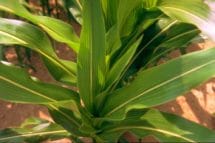
A second – targeted – treatment may eventually be applied on perennial weeds.
Corn borers: follow local alerts.
Begin irrigating based on local forecasts or tensiometer readings
220 GDDs before female flowering
Tassel is visible in the whorl
- The tassel emerges from the leaf whorl. The silks begin to elongate. The number of ovules per row is set.
- The number of potential ears is set.
- The number of ovules which can be pollinated is set.
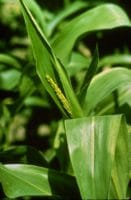
Apply nitrogen treatments in case of fertigation.
Corn borers: follow agronomic alerts.
Begin irrigating based on local forecasts or tensiometer readings.
• Early: 825 to 875 GDDs • Semi-early, flint-dent: 875 to 925 GDDs • Semi-early, dent: 925 to 980 GDDs • Semi-late: 975 to 1000 GDDs • Late: 1000 to 1050 GDDs
Female flowering
- The silks emerge from the ear. The tassel produces pollen. The ovules are pollinated. The leaves have finished growing. The leaf area index is at its maximum.
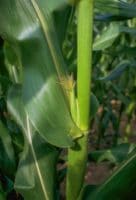
Apply nitrogen treatments in case of fertigation.
Cruising speed: rates and frequency should be adjusted to soil and climate. Follow local forecasts.
250 dj après floraison femelle
Kernel abortion threshold
- The cells of albumin (future reservoir of starch) multiply during the three weeks of latent stage which follow the pollination. The increase in kernel weight is low during this period, when the final number of kernels is established. The plant reaches its maximum height.
The dry matter that has been produced is stored in the stalk. The vegetative portion of the plant reaches its maximum weight.
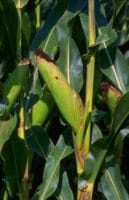
Cruising speed: rates and frequency should be adjusted to the soil and climate. Follow local forecasts.
20-24 days needed at the end of this stage, per point of additional dry matter.
Emergence of lentille vitreuse (in vitreous and vitreous-dented varieties) • Emergence of the depression at the top of the kernel (in dented varieties)
- Dry matter accumulates fast inside the kernel. The starch texture evolves, going from milk to wax, then floury and vitreous. The early development of vitreous starch inside the kernel of flinty and flinty-dented varieties indicates a D.M. rate of 25 to 27 percent.
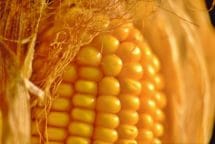
Follow the local forecasts to better determine when to end irrigation. Consider the date, the crop stage, and the soil water reserve.
600 to 675 dds after the female flowering.
50 percent kernel moisture
- Kernel growth slows down. This stage is characterized by one third of milk starch in the albumen.
- At 50 percent kernel moisture, the DM of the whole plant is at about 32 percent.
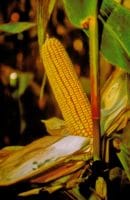
Follow the local forecasts to decide when to stop irrigating. Factors to take into account should include the date, the crop stage, and the soil water reserve.
• 640 to 700 dds after the female flowering. • 18 dds needed to decrease kernel moisture by 1 percent.
45 percent kernel moisture
- The kernel reaches 75-80 percent of its maximum weight.
- The stalk and leaf DM supports the growth of the kernels. The leaf index decreases fast.
- The whole plant yield is maximum.
Feed harvest between 28 and 35 percent DM/whole plant.
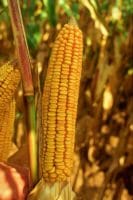
850 to 950 dds after female flowering, depending on the earliness.
32 percent kernel moisture
- The maize plant has reached physiological maturity. Kernel weight is at its maximum. The black layer appears at the kernel base, indicating that the nutrient transfer is over. Starch is either completely floury or flinty. The plant has a dried-out aspect.
Grain harvest – if possible – after 35 percent moisture, or earlier for maize used for .
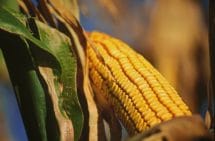
Fine chopping of crop residues by way of preventive corn borer control.